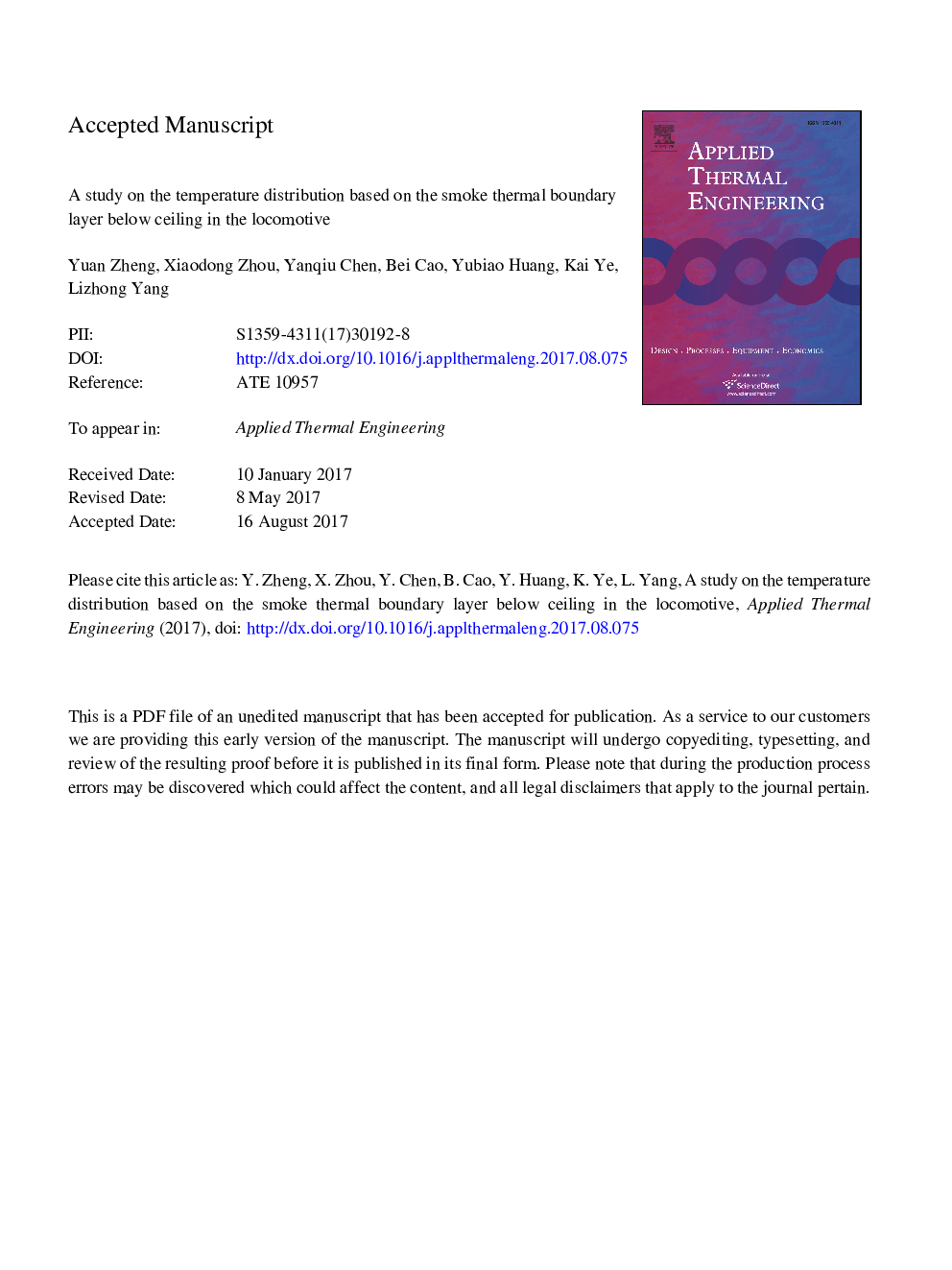| Article ID | Journal | Published Year | Pages | File Type |
|---|---|---|---|---|
| 4990762 | Applied Thermal Engineering | 2017 | 39 Pages |
Abstract
Modern rail car system highlights an interdisciplinary cooperation between dynamics, mechanical structure and materials science. The complexity of the system presents a big challenge for full comprehension of maximum ceiling temperature distribution of motive cabin, driven by hot smoke buoyancy. The study gives helpful advice for the installation distance of the fire detector below the ceiling. To quantify the characteristics of the distributions, the concept of thermal boundary layer is introduced with two factors, smoke screen and high blockage ratio of cross section. The factors are obtained through large eddy simulation, and examined by a series of small scale experiments. As a result, the temperature gradient and distributions of characteristic temperature could be derived from thermal boundary layer (TBL) distributions, and the curve of TBL could be described by the several slope lines. A one-dimensional exponential function based on the TBL is established to predict the maximum temperature distributions under the locomotive structure.
Keywords
Related Topics
Physical Sciences and Engineering
Chemical Engineering
Fluid Flow and Transfer Processes
Authors
Yuan Zheng, Xiaodong Zhou, Yanqiu Chen, Bei Cao, Yubiao Huang, Kai Ye, Lizhong Yang,
